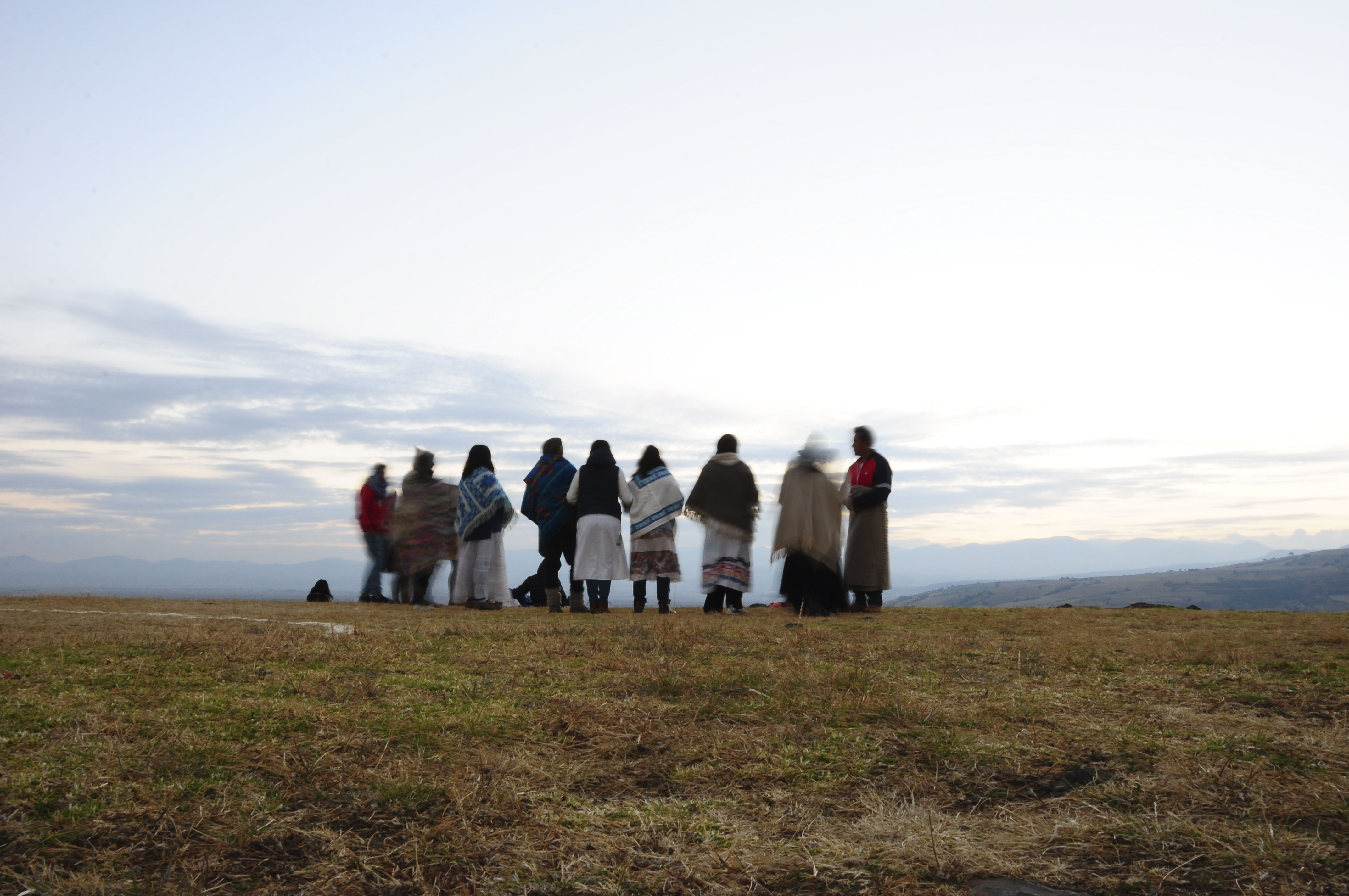#1 #2 #3 #4 #5 #6 #7
First step of the Mexican itinerant residency with the Alliance Française de Toluca in partnership with the Museo Arqueologico Roman Piña Chan in Tenango del Valle and the Secretaria de Cultura del gobierno del estado de México.
Arrival in Tenango del Valle, in the state of Mexico, on March 14, 2019. Visit of the towns of Tenango del Valle and San Pedro Tlanixco. Guided by residents with whom I stay, I discover their gastronomy, their crafts, the surrounding natural resources as well as their traditions by sharing with them meals, and daily life.
I also spend time in the rooms and the reserve of the Roman Piña Chan archaeological museum as well as in the archaeological area where I feel a very strong energy. Having the deserted pyramid floors as a workshop, once the area is closed to the public in the evening, was an unbelievable chance. It was a way of starting this Mexican journey by the heart of a local, present, and Ancient History.
Learning all these speaking with my anthropologist colleagues, with the inhabitants for whom these places are sacred and with the communities that still draw energy from them and to which they pay homage in their rites. I am learning a lot about the Mexicas and the Nahuas (pre-Hispanic communities local), about their gods and mythologies, about their way of understanding the World, their constructions, and their sacred games. Mostly I see how their traditions have stood the test of time until today. Indeed I had the chance to attend various Nahua ceremonies with local communities. Present in Tenango at the time of the spring equinox, it is the time of "Quinto Sol" (the fifth sun). I observed "Búsquedas de Visión" (research visions), I participated in "temazcales" (a kind of hut or literally “steam house”) and took part in the night ceremonies of this special time in the traditional local calendar. This is how I welcomed at dawn, with the community, this new sun from the top of the pyramid, while watching the full moon take leave of us, plunging into the crater of a volcano.
Balance and duality. The forces are double or quadruple: the two sides of a thing and the four elements, the two stars, and four cardinal points. I learn that this movement is Nahui Ollin.
In parallel with these discoveries, witness of a relationship with nature based on observation, respect, love, and interpretation, I also noted how this same nature can be abused. Strongly affected by consumerism coming straight from the United States, Mexico consumes a tremendous amount of plastic. Plastic which, more than just ending up piled up in savages landfills has, little by little, supplanted local production of natural fibers. Agave agricultural production and associated trades (production, processing, and distribution) are thus disappearing, as well as to the uses that these same fibers induced. The link that these ropes drew between the inhabitants of San Pedro Tlanixco (self-governing indigenous community) and nature is disappearing, leaving space to linear and short-term logic of use.
Surprisingly, this plastic used as a soda bottle or a bag is also used as a container in traditional ceremonies. If I was able to take from Europe, a vision idealized from folklore, it is changed from the moment I arrive. Ceramics can be replaced by industrial containers and this is not a problem or any surprise. I see that the important thing is what the object contains (offerings, flowers, tobacco, powder, incense, etc.). The important thing is the gesture and the intention put in them. It is this living form that has passed through the ages, more than frozen outlines of objects. They are the songs, the sound of the drums, the dances, and the symbols that have been transmitted. Mexican culture is then made of old ceramics - today better represented in an archaeological museum like the one I used as a workshop during the residency - as much as Coca Cola plastic bottles filled with pulque (alcoholic drink known as "of the gods" made from agave).
And it doesn't matter if an intimate and authentic ritual is superposed with a grandiloquent ceremony organized by the region (made up of "disguises" and folklore reinvented by the government). The Mexicans who take part continue to read signs in nature and to feel proud of it.
In that way, dualities do not literally clash but compose together a constantly evolving contrasting vision. The balance governing the whole cosmogonic worlds would therefore have to be recovered for the world on which we actually live.























Analogue and digital photographs. Notebooks and sketches.
• DUALIDADES
(dualities)
Installation in the Museo Roman Piña Chan, presented from
march 23 to may 23, 2019 :










Compositions, frottages on pyramids, weaving with picked-up fibers, collections, photographs, interviews with craft(wo)men, assemblages,...
Thanks to Serge, Maricel, Virgilio and his family, Axelle, Emmanuel, Toño and Laura.
Photo credits : Garance Maurer
Explore the different steps :
︎ introduction and final restitution
︎ TENANGO DEL VALLE #1
︎ SAN CRISTOBAL DE LAS CASAS #2
︎ MERIDA #3
︎ QUERETARO #4
︎ SAN LUIS POTOSI #5
︎ SALTILLO #6
︎ CIUDAD DE MEXICO #7
